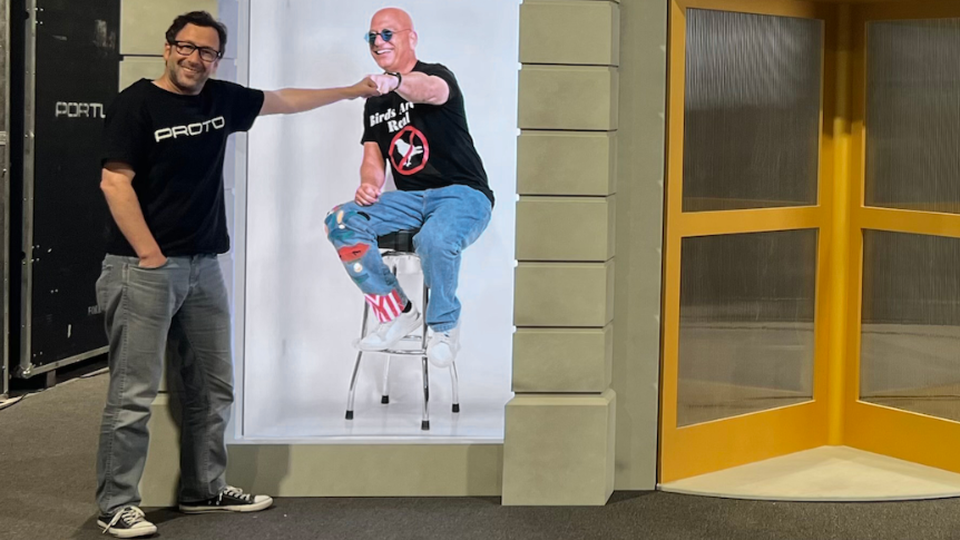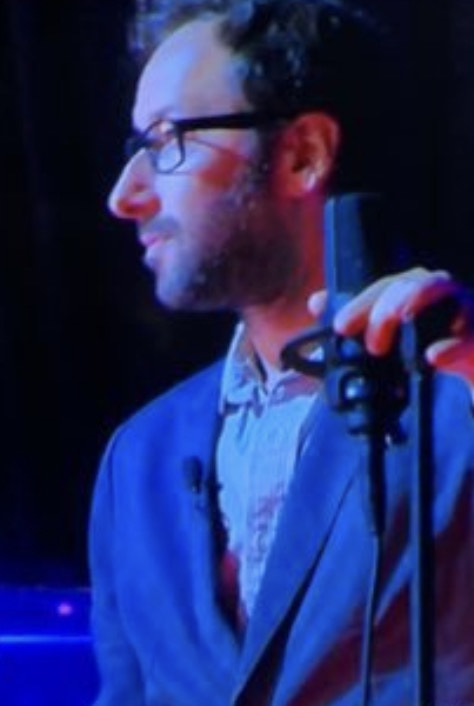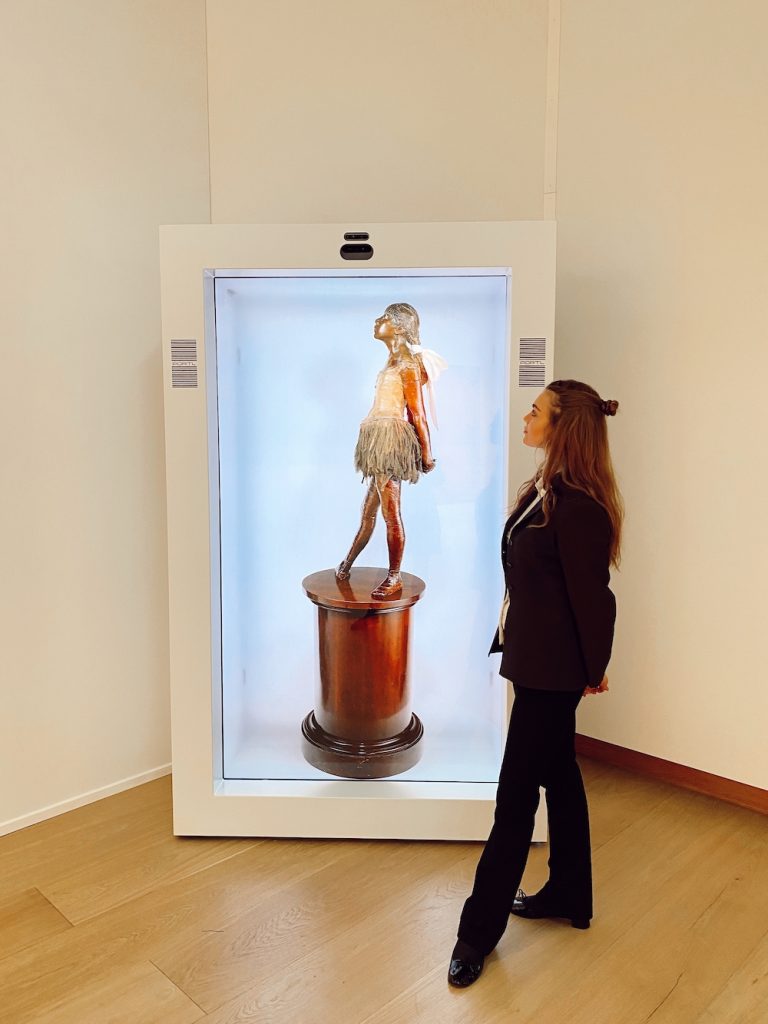Display Technology
Howie Mandel, David Nussbaum on mission to bring holograms to everyone
David Nussbaum founded Proto to bring holographic communication to the world. Now poised to revolutionize digital communication, digital marketing and more, investors like Howie Mandel and Diddy are helping Nussbaum spread holograms to the masses. Nussbaum sat down with Digital Signage Today to discuss the implications.

October 25, 2022 by Daniel Brown — Editor, Networld Media Group
 |
David Nussbaum, founder/inventor of Proto. Provided by Proto. |
This is part one of a two-part series. Read part two here.
David Nussbaum didn't always plan to disrupt digital signage and communications. His energy and charisma might be better suited to a tv host, which would explain his initial 20-year career in entertainment and broadcasting, starting with a popular celebrity interview podcast, during which he forged connections that would later be key in his new live as an inventor-entrepreneur. In our two-part feature, Nussbaum told Digital Signage Today the story of how he got into holograms, and why holograms are already becoming staples from retail to entertainment and how they will be an integral part of daily life sooner than we may think. Throughout the interview, he paused to indicate 3D holographic representations of various celebrities who have worked with the company, several of whom he met through his first job.
"The story is that I am a passionate broadcaster," Nussbaum said. "My background is in broadcast and in digital content creation. I love broadcasting, I always believed I would one day be running a radio station or some kind of a broadcast company or even manage to find myself on the air at some point. That's why I moved out to Los Angeles in 1999 from New Jersey. So, broadcasting, journalism, connecting with people. When I had a podcast, it was one hour a week, every Saturday for five years. I did 250 celebrity interviews from my living room. And it was great. I met a lot of my friends. I met my wife on Episode 9. It really allowed me to understand people. It allowed me to have sort of first dates with 250 really incredible people that I wasn't afraid to ask the questions that everybody was asking.
"One of my things that I was really proud of was the research that it took to do a one-hour show on a Saturday would take me 10, 15 hours, I'd have to find the right guest, and then once I found the right guest, I would learn as much about that guest as possible. Sure, they're a celebrity, or an entertainer, or a comedy writer… So I would search everything about them and I had a really specific way of investigating and really finding as much as I could. And I found connections with these people to be really incredible."
Lifetime friendships often resulted from these conversations, which is how Nussbaum met Proto investor and spokesperson Howie Mandel, and the experience would have unexpected career and life consequences.
Still, Nussbaum has been fascinated by technology since childhood, especially holograms. For him, it was especially related to classic films like "Back to the Future" and "The Time Machine."
"I'm Doc Brown," he said, with a chuckle. "I'm Doc Nussbaum. I bumped my head on the toilet and that's where I got the idea for the Proto."
 |
Provided by Proto. |
In seriousness, the story was much more complicated. Through connections on the show, Nussbaum became acquainted with the patent owner who famously put Tupac's hologram on stage for the first time. Nussbaum began to move into the hologram space and spent some time bringing back famous deceased musicians on stage. But as a broadcaster, he wanted a different direction.
"It's not about bringing back dead people, it's about connecting living people," Nussbaum said. Following his passion, he brought Jimmy Kimmel and Julian Assange in live 3D to audiences, along with one occasion where he helped Jack Black beam to Madrid for a Sony Press junket because he was tied up filming a scene for a project.
Still, the process was almost prohibitively expensive, with costs ranging from hundreds of thousands to millions of dollars per celebrity broadcast. Nussbaum wondered how to extend the technology to regular people and make it more affordable.
He began to work single-mindedly to shrink everything down into what he first called a "single passenger holoportation machine." The goal was for the person to see the audience in a fully interactive way through the camera, such that they could beam to multiple locations. CEOs, entertainers, politicians and eventually regular people would (he hoped) be able to make this technology part of their regular routine. A side effect of the technology was that its use turned out to be great for environment, too.
For example, Nussbaum recently worked with the LA Museum of Contemporary Art to beam in Bonnie Brennan, the president of Christie's, which is a customer and partner of Proto and a leading auction house, along with goods being auctioned. Instead of sending millions of dollars of goods between cities (with carbon footprint and wear and tear), the team was able to beam them "from one place to many," Nussbaum said. People were able to see and bid on artwork remotely while seeing the objects in high-fidelity 3D. Various sculptors and artists are now using holograms to exhibit and selling their artwork in this way, with huge sustainability benefits.
Nussbaum paused to show a selection of celebrities on the hologram device behind him, such as Albert Pujols. "I can beam anybody into any place they want to go, whenever they want to go, and we can do it using an iPhone only, which is incredible," Nussbaum explained that this generation of multimedia communication is volumetric and actually has shadows, which was previously impossible.
 |
Albert Pujols with his hologram. Provided by Proto. |
Traditional video chat removes nonverbal communication, but the hologram format allows individuals to feel like they are truly in the same room, which involves neuroscience. Proto worked with independent researchers and determined that the same positive chemical reactions that occur when people are physically spending time in the same room also happen when holograms are involved, with major implications for pandemic lockdowns, family connection, telemedicine, therapy and more.
In the interview, Nussbaum became increasingly excited, carrying his laptop over to show a close view of the full-sized hologram setup. A DOOH ad for a sneaker looked like it was physically floating in the air in the studio, including shadows that looked like they were actually cast by the overhead lights. The marketing implications for retailers, said Nussbaum, are huge. Inspired by visions from popular film and TV staples like "Back to the Future", "The Jetsons" and "Minority Report", the company is on a mission to make this technology real.
Thinking of the Christie's auction at MOCA, Digital Signage Today asked what this means for the museum industry. Objects from any museum can now be beamed anywhere in the world, Nussbaum said. This also has huge ramifications for merchandising in the Metaverse, and the tech is already being used by influencers to great effect in various social media platforms.
 |
Christie's has adopted holograms to beam objects for transport-free viewing and auction. Provided by Proto. |
Education is also a beneficiary — the world's leading experts, professors and docents can now give "in-person" talks and lectures from the safety and security of their own offices. The technology can be a great help in pandemic lockdown conditions along with any situations where physical safety is a factor.
Journalism can benefit as well. Universities, doctors and medical centers are now using the tech in medical training. With telehealth, medical experts can now remotely interact with patients in 3D. A medical team at a Florida university is using holographic telemedicine to diagnose dementia. Diagnosis of disabilities is now possible, which is a first for telehealth, Nussbaum explains, due to prior limitations of 2D screens.
DST asked if we're yet at the point where world-class surgeons can remotely do procedures using this tech and some combination of robotics. "That's the holy grail," Nussbaum said, but we're not quite there yet, though work is being done on integrating the technology with haptic feedback, which will may someday enable this feature. Similarly with ASL, which is a signing, whole-body language that is impossible to fully capture on traditional media, hologram display technology allows the speaker's full body to be visible in high definition, enhancing sign language just as it does in the other examples.
About Daniel Brown
Daniel Brown is the editor of Digital Signage Today, a contributing editor for Automation & Self-Service, and an accomplished writer and multimedia content producer with extensive experience covering technology and business. His work has appeared in a range of business and technology publications, including interviews with eminent business leaders, inventors and technologists. He has written extensively on AI and the integration of technology and business strategy with empathy and the human touch. Brown is the author of two novels and a podcaster. His previous experience includes IT work at an Ivy League research institution, education and business consulting, and retail sales and management.


